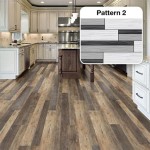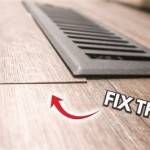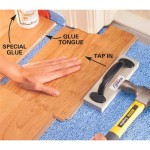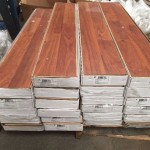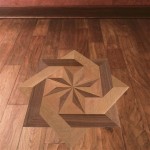What Type of Flooring Is More Durable?
Choosing the right flooring for your home is a crucial decision. It impacts the aesthetics, comfort, and longevity of your space. While style and budget are important considerations, durability stands out as a key factor, especially for high-traffic areas. This article will explore various flooring options and delve into their durability characteristics, helping you make an informed decision.
Hardwood Flooring: A Classic Choice
Hardwood flooring, a timeless classic, enjoys a reputation for durability and elegance. Made from natural wood, such as oak, maple, and cherry, hardwood offers a range of colors and grains, providing a unique aesthetic. Hardwood floors are known for their strength and ability to withstand heavy foot traffic. They can be refinished multiple times, extending their lifespan considerably. However, hardwood can be susceptible to scratches and water damage, requiring proper maintenance and sealing to preserve its beauty and longevity.
Ceramic and Porcelain Tile: Durable and Versatile
Ceramic and porcelain tiles are renowned for their durability and resistance to stains, moisture, and scratches. Made from clay and fired at high temperatures, these tiles create a hard, non-porous surface ideal for high-traffic areas. They are available in an extensive array of colors, patterns, and sizes, allowing for diverse design possibilities. Porcelain tiles, with their denser structure, are even more resistant to wear and tear. While resistant to scratches, these tiles can be susceptible to chipping, especially in areas with heavy foot traffic.
Luxury Vinyl Plank and Tile (LVP/LVT): A Modern Alternative
Luxury vinyl plank and tile (LVP/LVT) flooring has emerged as a popular choice for its durability, ease of maintenance, and affordability. These products simulate the look of hardwood, stone, or tile but offer superior water resistance and scratch resistance. LVP/LVT features a wear layer that protects the flooring from damage, and its waterproof core makes it ideal for kitchens, bathrooms, and basements. These floors are easy to install, making them a practical option for DIY enthusiasts.
Engineered Hardwood: A Balance of Durability and Aesthetics
Engineered hardwood flooring combines the beauty of natural wood with enhanced durability. It consists of multiple layers, with a thin veneer of hardwood on top of a plywood core. Engineered hardwood is less susceptible to warping and shrinking than solid hardwood, making it a suitable option for areas with fluctuating humidity levels. It offers a wide range of styles and colors, allowing for customization. While engineered hardwood is durable, it may not be refinished as many times as solid hardwood, limiting its lifespan.
Laminate Flooring: Budget-Friendly and Practical
Laminate flooring is a cost-effective option that mimics the look of various flooring materials, including hardwood, tile, and stone. It features a photographic image layer beneath a clear protective layer, providing a durable and scratch-resistant surface. Laminate is easy to install and maintain. However, it is not as durable as hardwood or tile and can be susceptible to moisture damage. It is generally not recommended for areas with heavy foot traffic or high moisture levels.
Carpet: Comfort and Insulation
Carpet remains a popular flooring choice for its comfort and insulation qualities. It offers a soft, plush feel underfoot and helps to absorb sound, making it ideal for bedrooms and living rooms. Modern carpet fibers are designed for durability and stain resistance. While carpet can be comfortable and warm, it is susceptible to wear and tear, requiring regular cleaning and maintenance. It is also not as durable as other flooring options and may not be suitable for high-traffic areas.
Factors to Consider When Choosing Durable Flooring
When selecting durable flooring, several factors should be considered:
- Traffic Level: High traffic areas need flooring with greater durability. Consider traffic patterns and expected wear and tear.
- Moisture Level: Areas prone to moisture require flooring with water resistance, such as tile or LVP/LVT.
- Style and Aesthetics: Choose a flooring style that complements your home's design and personal preferences.
- Budget: Flooring options vary in price, so set a realistic budget before making a decision.
- Maintenance: Consider the amount of maintenance each flooring type requires.
Ultimately, the most durable flooring for your home depends on your individual needs and preferences. By carefully considering all factors, you can choose a flooring option that will provide long-lasting beauty and functionality.

Flooring Types Pros And Cons Mr Handyman

Vinyl Vs Floor Which Is The Better Choice

Is Spc Rigid Core Lvt Flooring More Durable Wood And Beyond Blog

Porcelain Wood Look Tile Vs Luxury Vinyl Plank An Honest Comparison

Top Flooring Materials To Boost Your House Value

Laminate Vs Vinyl Flooring Metro Contractors
Tile Vs Granite Flooring Which Is More Durable And Cost Effective Simpolo Tiles Bathware

What Is Spc Flooring A Full 2025 Guide Proximity Mills

Home Office Flooring Ideas 50floor
What Is The Best Flooring For A Kitchen Tarkett
See Also
